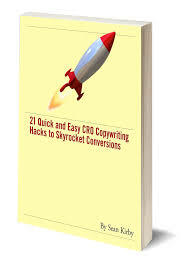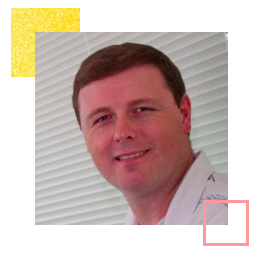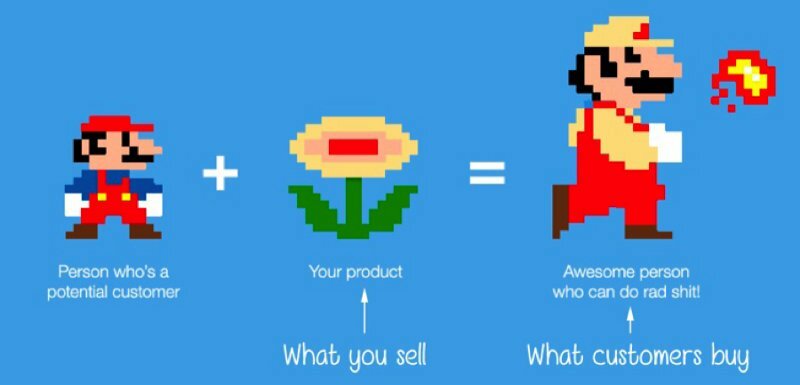
Sean Kirby (known around here as @SeanKirby) is a Copywriter who has been one of this community’s most engaged users, providing in-depth feedback on landing pages and helping Unbounce users bring their pages to the next level.
We wanted to learn more about Sean, so we asked him a few questions about who he is, where he comes from, and his insight into conversion copywriting which you can read below. He’s also included a link to his ebook 21 Quick and Easy CRO Copywriting Hacks to Skyrocket Conversions. 💥
Tell us about where you grew up:
I grew up in the suburbs of Philadelphia, Pennsylvania, in the USA. It was really a great place to grow up. There were lots of kids in our neighborhood and I remain friends with a couple of them to this day. After a stint in the New York area, working in Manhattan, I returned to the Philly area (but a different county) where I currently live.
I love that there are four distinct seasons and there is so much that is easily accessible. The beach, the Pocono mountains and several major cities are all within driving distance.
What are some things that you can help other members of the community with?
I’m a copywriter by trade, so copywriting is the obvious answer. This includes both the overall messaging as well as more specific word choices and turns of phrase. But like any good conversion-focused copywriter, I’m well versed in all the elements that go into conversion rate optimization, including marketing strategies, offers, testing ideas and best practices, and consumer psychology, among others.
Members of the community may also find value in a FREE ebook I wrote: 21 Quick and Easy CRO Copywriting Hacks to Skyrocket Conversion.

How did you wind up in conversion copywriting?
I kind of fell into it. I majored in communications in college, but with the intention of doing something more related to broadcasting, because I love music and sports. I got my first experience with conversion copywriting during a summer internship. The company did a lot of direct mail, and part of my job was to proofread the kits. It was a great learning experience seeing firsthand what worked and what didn’t.
It was during this experience that I discovered how interesting the craft of writing persuasively is. The mix or art, science, emotion and logic all working together keeps things from feeling stale or monotonous. And the challenge and definitive results are exciting to me. It’s a great feeling when something you write wins in a split test or increases conversions.
By the end of that summer I was given the chance to get involved in the writing a bit more, adapting one control into a different format and actually writing a new kit for a creative test. I was fortunate to be given that opportunity.
How did you find the Unbounce Community?
I was pretty active on inbound.org for a while, and gave landing page feedback on multiple occasions. It was a good way to share my expertise and help people. And I was able to get some business out of it, too. So when inbound.org shut down, I went in search of places I could continue to give feedback.
I think I first came across the Unbounce community from a google search, and now I regularly check in. It’s refreshing to be part of a community that genuinely supports others and provides value rather than just promoting their content.
What are some of your favourite verticals to work in?
I have a pretty broad background, with experience in B-to-B and B-to-C in industries such as financial, health care, publishing, continuity clubs and real estate. But I don’t know if I could say I have a favorite.
Personally, I get more excited about the process and challenge of moving people to action than from the industry I’m writing for. And effective copywriting is more about the target audience than the product or service anyway.
What are some of your go-to resources for copywriting inspiration?
One of the first tricks I learned was to keep a swipe file. Whenever I see an interesting approach, concept or any other element worth stealing, I make sure to tuck it away.
Old copywriting books and articles are also good go-to sources for inspiration, especially the ones that give plenty of examples.
And one of my favorite sources is customers’ own words… Going through surveys, customer service calls, and other communications are a great way to get a feel for how the target audience speaks, and you can find some powerful phrases you may never think of on your own.
Describe your process when coming up with copy for a client?
The first step is a kick off with the client to get to know the specifics of the project, goals, expectations, insights and anything else they find important. The more supporting information the client can provide the better, especially related to the customers/prospects and any previous results.
I also like to do research separately from what the client gives to get a broader perspective. This includes looking at what competitors are doing, what other companies with similar prospects are having success with, etc. If I can, it’s always helpful to speak with people in the target audience to get a feel for their attitudes, pain points, motivations and such.
Once all of that is done, I start plotting out the messaging. I typically come up with headlines and subheads first, making sure that I have everything necessary to hook the prospect, build desire and reduce friction. I sort of work backwards on this, starting with the end goal in mind and gearing everything towards that so that everything moves the reader to the next step. Then I write the full copy for the individual sections.
With that done, the next steps are to edit, edit, and edit again. This is the step that separates many great writers from good writers. David Oglivy once wrote that he was a lousy copywriter but a good editor. And Enerst Hemingway claimed that the first draft of anything is sh*t.
There are variations in this process depending on the situation. For instance, if I’m working with a designer, I like to collaborate early before all the copy is in place. Sometimes, if there is some specific design element or layout that would affect the messaging, I may provide a sketch and/or description to the designer. And sometimes clients want different concepts prior to the full copy.
What are some common misconceptions about conversion copywriting?
The biggest is probably that we sit at a computer and bang out copy all day. Most people would be surprised by how little time copywriters spend actually writing. As you can see from the process above, a lot of time is devoted to researching, planning, concepting and editing. Plus there are all the typical administrative things that go along with any job.
Then there are common misconceptions I see about the work, which leads to lower conversions. This is probably the biggest: Most people, when trying to get conversions, make the writing all about the company, product or service. It’s certainly understandable. I see the logic in it. But it’s the last thing you want to do.
Instead:
Sell the benefits. People don’t care about your company, product or service. They care about themselves. So the focus has to be on the reader. How will your offer make their life better, easier, etc.? This image is one of the best explanations I’ve seen on this:
Sell the offer. The more commitment required, the harder it is to get a conversion. So make it easier on yourself by focusing only on the next step. If you’re offering a demo or free trial, don’t treat it like your selling the monthly subscription or full product. Sell the benefits of that demo or trial.
Who are some copywriters that you admire?
Personally, I tend to gravitate to the pioneers of the field. Guys like John Caples, Frank Johnson, David Ogilvy, Eugene Schwartz, Bill Jayme and Robert Collier were masters of the craft. I could read their stuff even if I weren’t interested in what they were selling or in copywriting. Claude Hopkins was an advertising genius who had an uncanny ability to find what was going to hook the reader. Bob Bly is a guy who’s still around who I think is a terrific copywriter.
What’s your favourite book?
Wow, that’s a hard question. I’ll cheat a bit and offer a few.
For fiction, I’d have to say The Bourne Identity by Robert Ludlum. Great book, terrible movie.
My favorite book on copywriting is Tested Advertising Methods by John Caples. I’ve gone back to this time and again for inspiration. The chapters on headlines alone are worth the price of the entire book.
For non-fiction, I highly recommend Predictably Irrational by Dan Ariely. Certainly it has insights that can help CRO, but besides that, it’s just fascinating.

Okay, it’s @jess again. I want to personally thank Sean for taking the time to chat with me, and for contributing to this community in such a meaningful way. Members like him make this such an awesome community, and I’m so grateful for his contributions!
Sean’s contact information is below if you’d like to connect 👥


